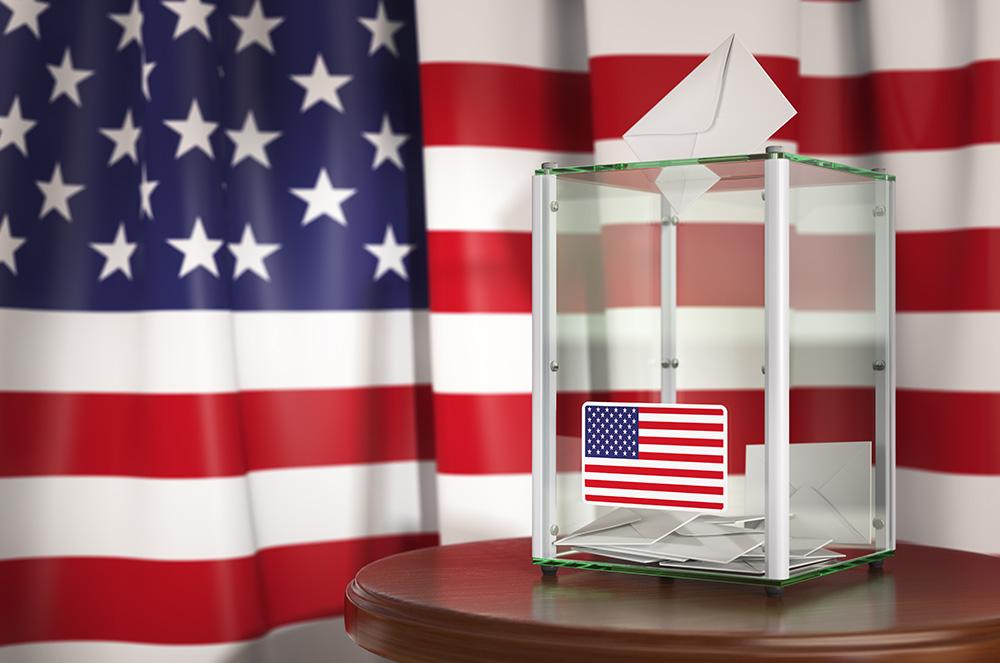
Compare and Contrast Presidential and Parliamentary Systems
The adoption of either a presidential or parliamentary executive form of government forms a critical and important part of any constitutional design. Over the years, there have been debates on the merits and demerits of either of the systems of government. What is not disputed, however, is the fact that a nation’s type of government generally refers to the organization of the state’s executive, legislative, and judicial organs. The selection of either of the systems of government has been used as an indication of the level of democracy that the said country practices. This, therefore, means that whether a growing democratic nation opts for a presidential or parliamentarian system, this will have an impact on democratic consolidation and the subsequent democratic stability.
The choice of a regime of government differs distinctly as the system chosen dictates the manner in which each branch of government functions and interacts with the rest of the system, and this has the consequent result of affecting the efficiency and stability of the system as a whole. In essence, therefore, a presidential system of government refers to the system where the executive branch, headed by the legislature, exists and presides separate from the legislature to which it is not accountable. In a presidential system, the level which an elected president can claim popular mandate legitimacy is solely dependent on the manner in which he or she was elected into power. This, therefore, means that a president elected by a clear absolute majority of the voters can command a great deal of legitimacy in any conflict with the legislature. A parliamentary system, on the other hand, is characterized by the fusion of executive and legislative powers which is achieved by the fact that the government needs the confidence of a majority in the legislative assembly in order to come to and remain in power. In this respect, the executive branch of government depends on the direct or indirect support of the parliament which is often expressed through a vote of confidence (Rawls 24-27).
Britain, Germany and Brazil have adopted systems of government that combine these two systems to a given extent. In the UK, the system of government has been the long-established parliamentary democracy which is characterized by the existence of a constitutional monarch as a head of a state while the prime minister is the head of the government. Under this system, the registered voters have a constitutional mandate to elect their members of parliament in a general election conducted after every five years. These members represent the 629 constituencies of Britain in the House of Commons. In the election, the party which has most of the seats is the party that forms the government executive which has the mandate of determining policy. Those members of parliament that do not come from the wining party will then form the opposition. This system of government has had considerable impact on the political stability of the country and the promotion of political freedom among the population.
Germany, on the other hand, is a constitutional federal republic, having its political system laid out in the 1949 constitution and referred to as the Basic Law. Under this constitution, there are three separate arms of government namely the legislature, the executive and the judiciary one. The country has, therefore, a parliamentary system, having the chancellor, who is elected by parliament, as the head of government while the president, who is a rather a ceremonial figure, is the head of the state. The German parliament is made up of two houses, namely the Bundestag (Federal Assembly) and the Bundesrat (Federal Council). The Bundestag has the supreme legislative power and represents the lower house of parliament. The Upper House of Parliament is represented by the Bundesrat which also represents the 16 federal states of Germany, and, hence, cooperates in lawmaking and administering the Federation. In regards to political parties, Germany is considered as one of the countries with a very strong political party system in the world. The country uses a multi-party system and has a total of five political parties with the two major ones being the Christian Democratic Union (CDU) and the Social Democratic Party of Germany (SPD).
In Brazil, the 1988 Constitution established the country as a federal presidential representative democratic republic. Under this system, the president is the head of the state and the head of the government, and, hence, it does not have a prime minister or a chancellor as is the case of Britain and Germany. The country thrives on a strong multi-party system which is used to guarantee political freedom.
The major distinctions between these two systems as exhibited by the three countries, usually relate to how the main branches of government are selected. The main branches of government are largely the executive and the legislature one. In all democracies, the legislature is popularly elected and, thus, under a parliamentary system, it is the elected legislature that chooses the executive. This is the case in both Britain and Germany where the voters only elect the members of parliament and it is the elected members who will select the prime minister and the chancellor respectively. Under a presidential system, the chief executive who is the president is popularly elected as is done in Brazil.
Simple Majority or a Proportional Representation System
Electoral systems have played a pivotal role in ensuring the stability and growth of many democracies in the world. This is because they provide a set of institutional formulas that are used in producing a collective choice through voting. There are a number of electoral systems today used in election processes of many countries. These electoral systems include majoritarian formulas which are also known as simple majority, semi-proportional representation systems, proportional representations and mixed systems. However, of all these systems, the two most popular systems are the simple majority and the proportional representation electoral systems.
The simple majority system is also known as the First-past-the- post system which refers to a system where the voter is given a list of names of the nominated candidates and votes by choosing one candidate only. Consequently, the winning candidate is that candidate who will have gathered the most votes from the votes counted. This system has the advantage of being very simple and also has the tendency to produce winners who are representative beholden to a defined geographic area. This system, thus, provides a clear-cut choice between the main candidates who were competing in the election. However, as a disadvantage, the system has been criticized for excluding small parties from fair representation. It is also a system that does not promote the existence of many political parties as it ensures that the playing field can only be occupied by the two very strong parties. To this extent, the simple majority system has been seen as being a tool for the continued marginalization of the minority in the society.
Proportional representation, on the other hand, refers to an electoral system that delivers a close match between the percentage of votes that groups of candidate obtain in elections and percentages of seats they receive. This system can be done through party-list proportional representation or though open list and closed list representation. The system has the advantage of creating enough playing ground for many political parties unlike the simple majority. However, the main disadvantage of being very complicated and, thus, not appropriate where the large number of the population is illiterate (Rawls 24-27).
Consequently, for a country that has a history of violent political competition, the best electoral system to use is the simple majority system. The system has been used by many countries which are characterized by such type of political competition. Some of the countries which have successfully applied it include the UK, Canada, Kenya and India. Regarding India, the country represents one of the world’s largest democracies with over 670 million voters in the last general election. It is characterized with an extremely diverse and multi-ethnic society which is highly volatile and competitive. The simple majority system has been working in the country since 1967 and was chosen for the main purpose of avoiding fragmented legislatures and help in the formation of a stable government.
Politics of Managing Conflicts over Identity, Culture and Nationalism
Managing conflicts over diversity has become a central theme in the democracies of many countries in the 21st century. Identity is indeed a central concept in the politics of any state, and the ability of the state to accommodate, recognize and acknowledge the different identities is vital to the economic, as well as to the political development of the particular state. It is, therefore, important that a state has proper policies which help in managing conflicts over identity, culture and nationalism. Many countries have had a long history with groups demanding recognition and identification in the affairs of the state. This concept of identity politics has taken root in countries like France, Nigeria and India in the recent past, and the governments of these countries have had to develop appropriate policies in order to manage such conflicts. The experiences of these countries are similar to some extent, but also differ in other areas. For instance, in France, the clamor in identity has centered on old grievances around ethnic and racial lines where these groups have been demanding recognition of their identities, inclusion into the affairs of the country and acknowledgement of their identities in the laws and policies of their country. In Nigeria, the quest for identification has been largely based on religious grounds with increased fighting between Christians and Muslims for the control of the country’s political affairs. However, in the recent past, there have also been claims around linguistic identity of the Yoruba people in Nigeria. The Indian situation is perhaps the oldest of them and the most complex among the three countries. India is a large country with the largest population in the world and, thus, is characterized with diverse ethnic and religious minority groups all of whom are claiming identification. The cultural question is also of vital importance in the country; moreover, it is one of the most culturally diverse countries in the world. Managing all these identity conflicts has proved a critical feature of any government that comes to power (Sandel 67-72).
The main similarities in these countries have been the claims of those groups demanding recognition. All these groups have cited discrimination and marginalization from social, economic and political opportunities as the main factors that have led to the conflicts. They have, therefore, demanded social justice and the inclusion of their identities in the laws and policies of the country. Both France and India have responded to such demands positively recognizing that cultural, religious and ethnic liberty is one of the critical factors of human development and, thus, have to be recognized. In the three countries, the process of social change and the struggles of cultural freedom have been facilitated by the advancement of human freedoms and democracy in the sphere of international law.
Works Cited
Rawls, John. Political Liberalism. New York: Columbia University Press, 1993. Print.
Sandel, Michael J. Liberalism and the Limits of Justice. New York: Cambridge University Press, 1998. Print.




